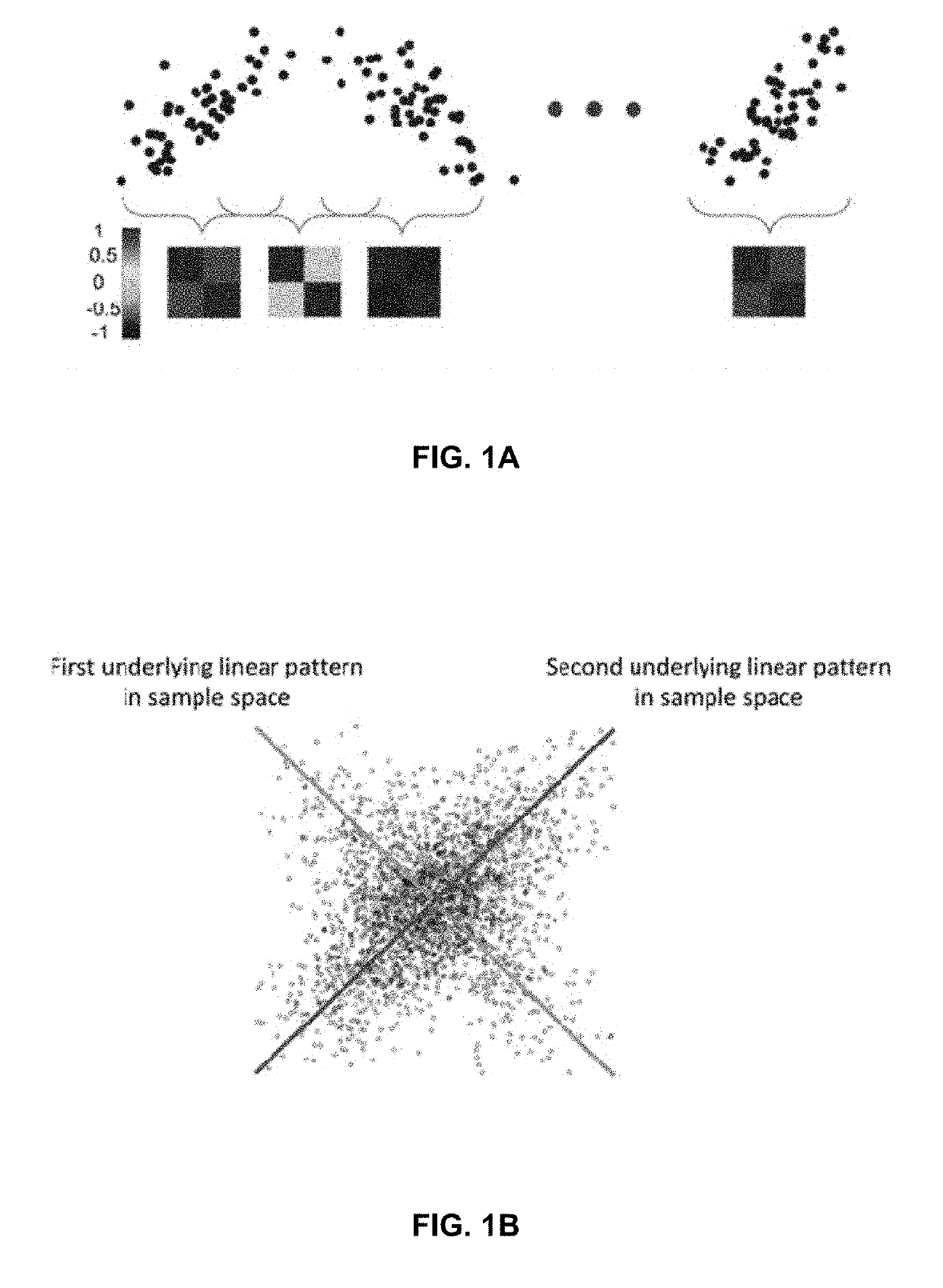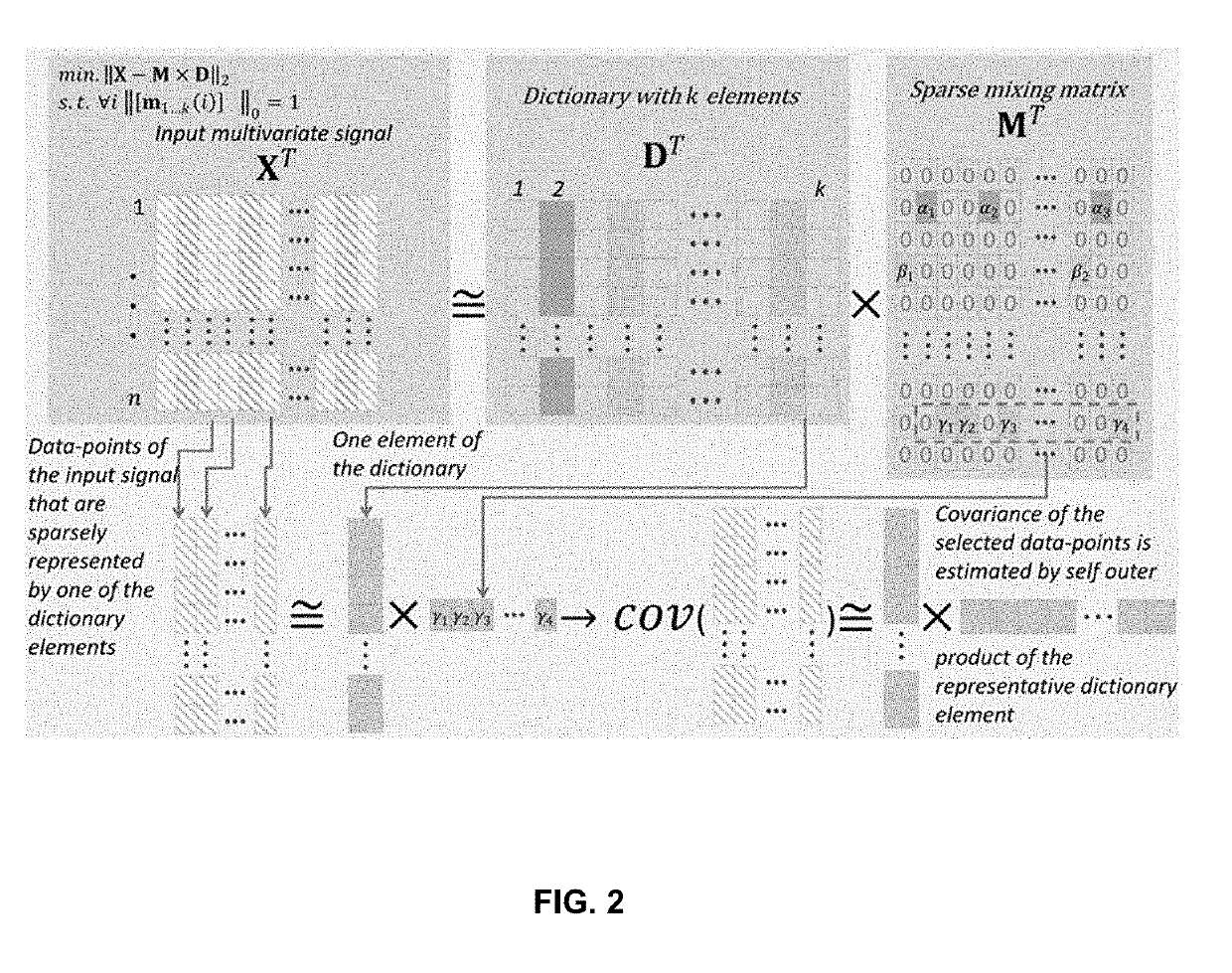System and methods for dynamic covariance estimation of a multivariate signal
a multivariate signal and covariance estimation technology, applied in the field of multivariate signal processing, can solve the problems of lack of prior knowledge of such expected dynamics during the resting state, less certainty in working with brain function data, and invalidity of assumptions commonly used
- Summary
- Abstract
- Description
- Claims
- Application Information
AI Technical Summary
Benefits of technology
Problems solved by technology
Method used
Image
Examples
Embodiment Construction
[0033]The present invention is directed to a system and methods of capturing small changes in complex system by analyzing the interactions of various components within the system. In particular, embodiments of the invention may detect quick changes that may have been undetectable by prior art methods by capturing the dynamic covariance of a multivariate signal without local assumptions that may include leveraging a sparse dictionary decomposition of the input signal of network time courses.
[0034]Generally, certain preferred embodiments of the invention may use an input multivariate signal, that is, an n-dimensional multivariate signal that may be represented a two-dimensional matrix where each column in the matrix represents n-dimensional time points of the signal. The signal may be decomposed into a matrix of a finite number of n-dimensional dictionary elements and a corresponding mixing matrix based on a major constraint that each time point of the input signal is represented by o...
PUM
 Login to View More
Login to View More Abstract
Description
Claims
Application Information
 Login to View More
Login to View More - R&D
- Intellectual Property
- Life Sciences
- Materials
- Tech Scout
- Unparalleled Data Quality
- Higher Quality Content
- 60% Fewer Hallucinations
Browse by: Latest US Patents, China's latest patents, Technical Efficacy Thesaurus, Application Domain, Technology Topic, Popular Technical Reports.
© 2025 PatSnap. All rights reserved.Legal|Privacy policy|Modern Slavery Act Transparency Statement|Sitemap|About US| Contact US: help@patsnap.com



